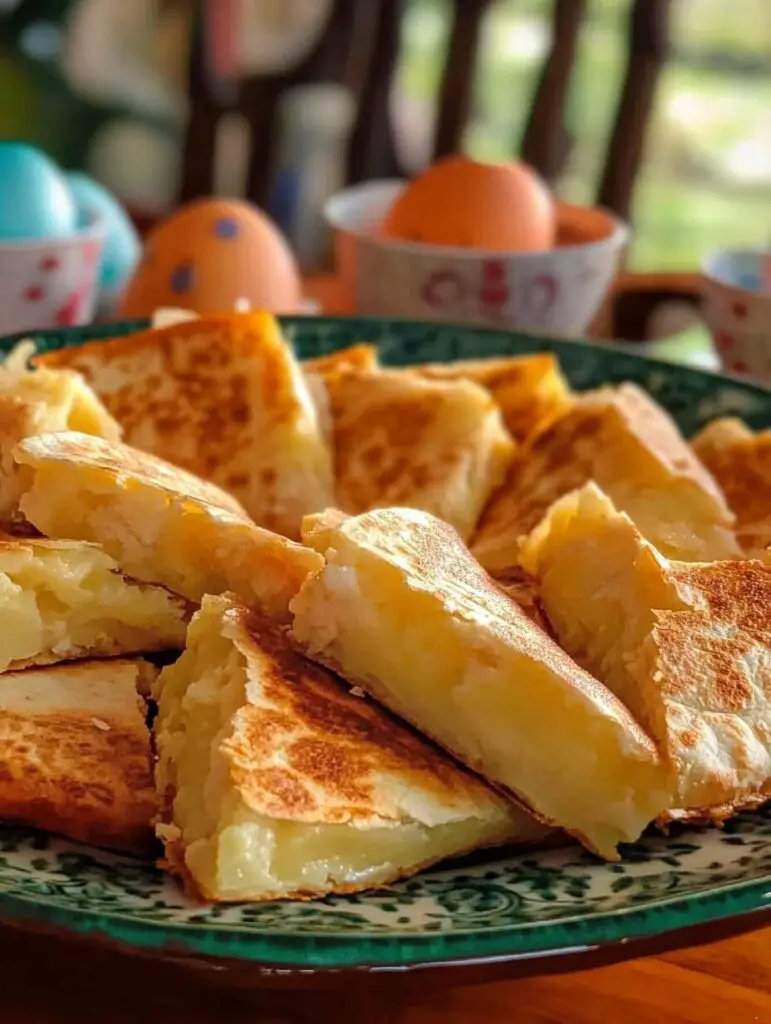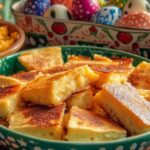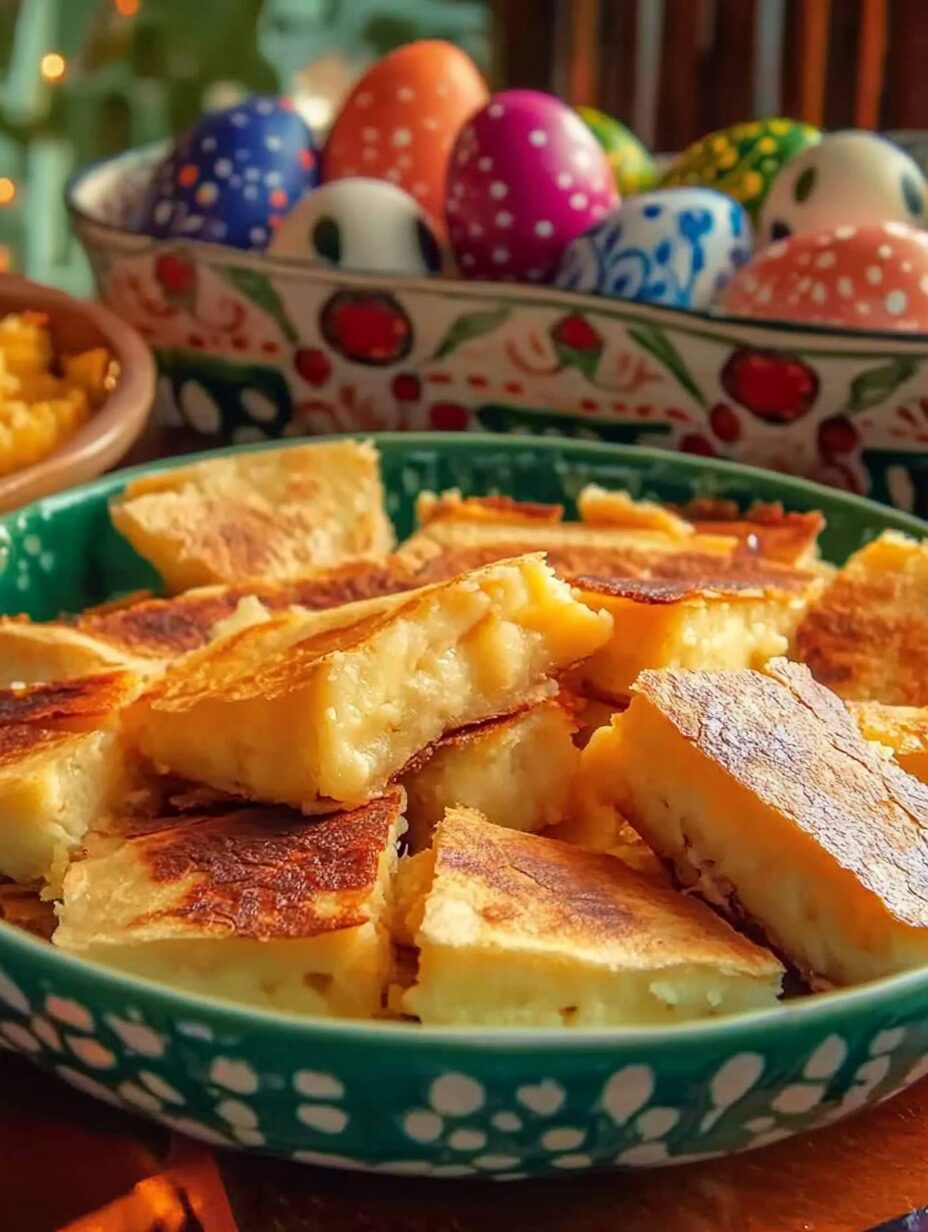When people think of “quesadilla,” they think of a tortilla filled with cheese, and perhaps some extras. However, when you think of El Salvador, the word quesadilla is a different word, and something that is truly unique. Salvadoran Quesadilla isn’t your usual food item; it’s soft, lightly sweet cheese-flavored cake, with a an incredibly tender crumb and a golden top that melts into your mouth. It is baked to perfection, and often consumed by drinking coffee, and handed over generations, this dessert reveals the essence of Salvadoran food and culture.
In this complete guide, we’ll look at the history, ingredients techniques, variations and the cultural significance in Salvadoran quesadilla. If you’ve never tried it before, get ready to be enticed. What if you already know the taste? You’re in for some fresh tricks, tricks, and stories. Let’s explore the delicious world of Salvadoran quesadillas.
1. What Is Salvadoran Quesadilla?
Salvadoran quesadilla is a typical baked item, similar in texture similar to a pound cake however, it is flavored with cheese and occasionally a touch of Sour cream. Contrary to its Mexican counterpart, it’s an savory and sweet cake that is made of the rice flour (or all-purpose flour) as well as queso duro (a hard Salvadoran cheese) eggs milk, butter, and eggs.
It is usually enjoyed as breakfast or at merienda (afternoon snack) particularly with the robust Salvadoran coffee. Its flavor is sweet buttery and subtle cheesey, and has a crust that creates a delicious golden top after baking.
2. A Glimpse into Its History and Cultural Significance
This qusadilla salvadorena is a favorite in Salvadoran families for generations. Based on colonial Spanish baking traditions, and then adapted using the local produce and cheeses. This dessert is a symbol of resilience, strength, along with the enjoyment of sharing meals.
It’s sold in bakeries all over the United States typically wrapped in foil or wax paper and sometimes sold at stand-bys on the road, and is always baked with love in the kitchens of family members. It’s particularly popular for religious holidays, weekends gatherings, or for a thoughtful present to friends and family members.
3. Salvadoran Quesadilla Recipe: The Classic Version
Let’s begin with the tried-and-tested traditional recipe.
Ingredients:
- 1 cup rice flour (or all-purpose flour)
- 1 cup grated queso duro (or Parmesan as a substitute)
- 1 cup sugar
- 1 cup unsalted butter melting
- 3 large eggs
- 1 cup sour cream (or Salvadoran crema)
- 1 tablespoon baking powder
- 1 teaspoon vanilla extract
- Sesame seeds to top (optional but not a traditional)
Instructions:
- Preheat oven to 350 degrees F (175degC) as well as grease the cake or loaf pan.
- A bowl is used to mix egg yolks and sugar together until they are light and fluffy.
- Mix together the melted butter, sour cream and vanilla. Mix until it is well-combined.
- Mix in the cheese mixture, the flour and baking powder until it is smooth.
- Pour batter into pan. Sprinkle sesame seeds over the top.
- Bake for 40-50 mins, up to the point that a toothpick is clear.
- Cool down before cutting and then drink with coffee.
4. Ingredient Spotlight: Queso Duro and Its Substitutes
Queso duro is the cheese that is traditionally that is used for Salvadoran quesadilla. It’s dried, aged cheese that has a sharp, salty taste that provides the cake with its distinct sharp, savory flavor. When queso Duro isn’t in the market and home bakers are often forced to replace it with:
- Grated Parmesan cheese
- Cotija cheese
- Pecorino Romano
- A blend of mozzarella and feta to provide the perfect balance
The key to success is the salty, crumbly cheese that is able to stand up to baking without slamming to form a gooey mess.
5. Why Rice Flour Is a Game Changer
Although some recipes of today use an all-purpose mix of flours, the rice flour is the traditional choice and can make a huge difference. It gives quesadillas their distinctive lightness and a crumbly texture. The cake is airy, yet still dense and crumbles just enough to melt into your mouth.
For those who are gluten free, rice flour makes this dessert naturally easily digestible and accommodating.
6. Variations on the Traditional Recipe
Salvadoran families typically have their own distinct twists. Here are some of the most creative versions that you can find:
- Coconut Quesadilla Add 1/2 cup of shredded coconut to give it texture and a the tropical flavor.
- Cream Cheese Quesadilla: Swap some of the crema using the softened cheese.
- chocolate Quesadilla: Stir in some teaspoons of cocoa powder to make an easy dessert version.
- Mini Quesadillas Baking in muffin cups that can be used for single-serving snacks.
The experimentation with flavors doesn’t take away from tradition. It enhances it.

7. Pairing Ideas: What to Enjoy With Salvadoran Quesadilla
The rich, salty and sweet flavor in Salvadoran quesadilla is a perfect food partner to:
- coffee: Especially Salvadoran roast is known for its chocolatey notes.
- Hot Chocolate: A treat for children or sweet fans.
- Honey or fruit jams: As a spread on a warm slice.
- Sliced papaya or mango: For a bright breakfast that is tropical and fresh.
- Horchata in a glass, or atol de elote for a complete Salvadoran experience.
8. Tips and Tricks for the Perfect Bake
Do you want a guarantee-free outcome every time? Follow these guidelines:
- Let the ingredients cool to ambient temperature.
- Use fresh baking powder. The powder that is old won’t be able to rise correctly.
- Do not overmix, as this can cause the cake to become dense.
- Make use of a glass or metal pan to bake evenly.
- Cool it down before cutting to keep its texture.
Always taste while you’re making. A batter that is well balanced will result in an appropriately balanced cake.
9. Storage and Make-Ahead Tips
Storage:
- Keep at room temperature inside an airtight container up to 3 days.
- Keep it in the refrigerator for up to 5 days.
- Individual slices can be frozen covered in foil up to two months.
To reheat:
- Warm the oven or in a toaster oven at 300 degrees Fahrenheit (150degC) in 5-10 mins.
- Avoid microwaves as it can cause it sticky.
Plan in advance for your regular snacking — it holds beautifully.
10. Sharing Salvadoran Quesadilla: More Than Just a Recipe
In Salvadoran culture food is considered to be a sign of love. Giving a slice of warm Quesadilla Salvadorena is an expression of “you matter to me.” The cake is baked in birthdays and weekends and holidays at grandma’s home. It travels across borders, is transported in suitcases, or is kept in the hearts of those who’ve left.
It’s a meal that tells a story — of home and family, of traditions, and invites everyone to join the dinner table.
Conclusion: Discover the Soul of El Salvador in Every Bite
Salvadoran quesadilla isn’t just cake. It’s a moment in time. A moment of celebration. A hug that is edible. If you’re making it for the first time or revisiting an old family recipe This simple, yet rich snack can bring people closer. The distinct flavor of Salvadoran quesadillas, which are subtly sweet, lightly sweet, and deeply comforting — is something you’ll be craving every time you eat it.
If you’re looking to discover new flavors around the world or give something meaningful to someone make some quesadilla salvadorena. It’s more than just food. It’s a glimpse from the Salvadoran soul.
Print
Discover the Unique Taste of Salvadoran Quesadilla: A Rich Culinary Tradition
- Total Time: 55–65 minutes
- Yield: 8 to 10 slices
Ingredients
1 cup rice flour (or all-purpose flour)
1 cup grated queso duro (or Parmesan as a substitute)
1 cup granulated sugar
1/2 cup unsalted butter, melted
3 large eggs
1 cup sour cream (or Salvadoran crema)
1 teaspoon baking powder
1 teaspoon vanilla extract
Sesame seeds for topping (optional but traditional)
Instructions
-
Preheat oven to 350°F (175°C) and grease a loaf or cake pan.
-
In a large bowl, whisk the eggs and sugar until light and fluffy.
-
Add the melted butter, sour cream, and vanilla extract. Mix until smooth.
-
Stir in the grated cheese, flour, and baking powder until well combined.
-
Pour the batter into the prepared pan and sprinkle sesame seeds on top.
-
Bake for 40–50 minutes, or until a toothpick inserted in the center comes out clean.
-
Let cool completely before slicing and serving.
Notes
-
Use room temperature ingredients for better mixing.
-
Fresh baking powder ensures a good rise.
-
Don’t overmix the batter to maintain a soft texture.
-
Use rice flour for a traditional and slightly crumbly finish.
-
Let it cool before slicing to avoid crumbling.
-
Top with sesame seeds for authentic flavor and visual appeal.
- Prep Time: 15 minutes
- Cook Time: 40–50 minutes


